Pietra Bridge
Ponte Pietra (literally Stone Bridge) is the first construction realized by the Romans when they arrived in Verona in the first century B.C. It is characterized by the combination of two different materials: the original white stone and the bricks that replaced the damages suffered by floods and war. It preserves the characteristic donkey-shape of Roman bridges.
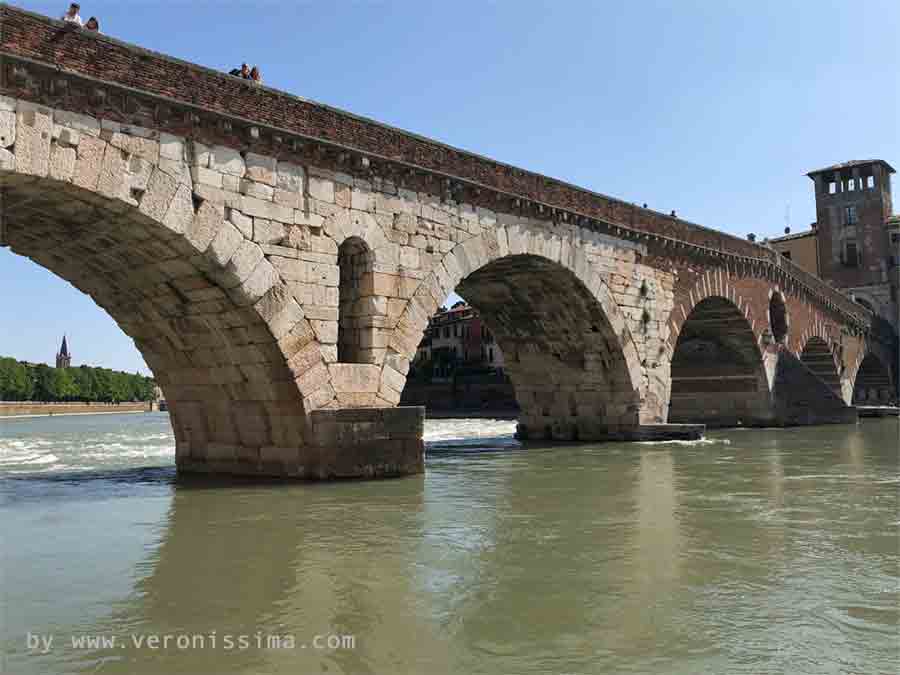
For further information:
+39 333 2199 645 info@veronissima.com P.I. 03616420232 C.F. CPPMHL74L13L781C
The Romans arrived in Verona at the beginning of the first century BC. The city was built within a deep bend in the Adige River, which, with its current, guaranteed the natural current guaranteed a natural defense to two thirds of the settlement. For not to remain isolated, however, they also built a bridge that would allow them to cross the river. This bridge was built at the northern northern vertex of the great curve of the Adige where the river bed is made up of a solid rocky base. solid rocky base, the banks are close together and the water is less deep. less deep.
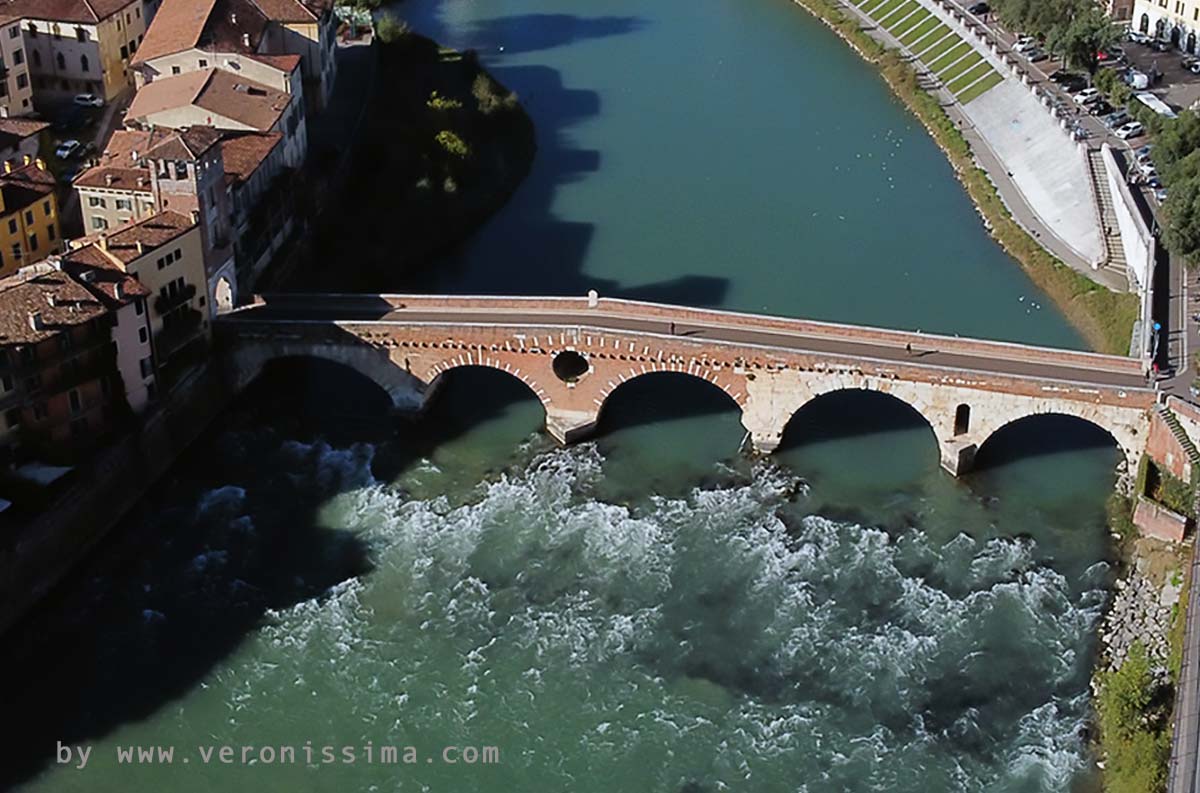
The ancient ford
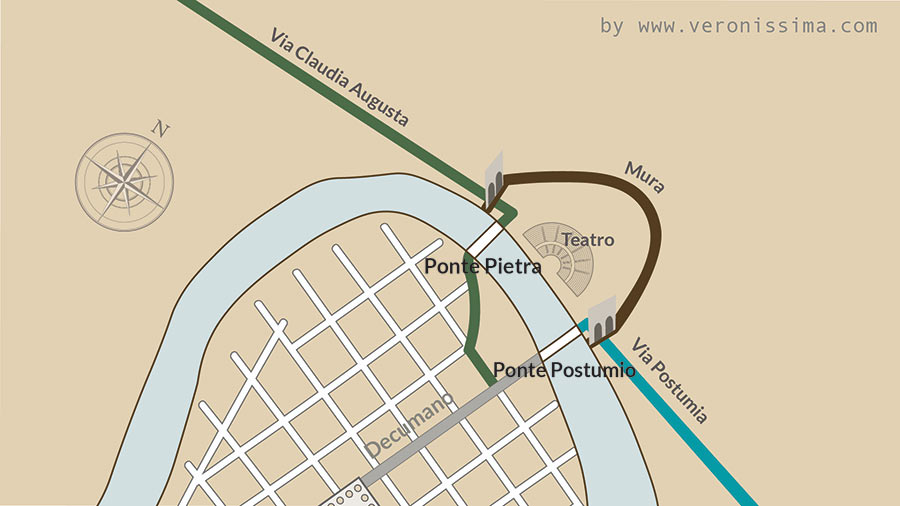
Archaeologists and historians agree that where there is the Roman bridge in the protohistoric era there was a ford consisting of a footbridge or a simple wooden bridge. This connected the Paleovenetian settlement on the top of San Pietro hill with the plain on the other side of the river. In this way Verona was already a strategic point of connection and trade between different worlds and cultures. Some elements prove this thesis.
The Name
The Roman bridge was called Pons Lapideus which, in a literal translation, later became Ponte Pietra. It seems a choice made to emphasize the difference with the fragile and insecure wooden bridge that preceded it, and that almost certainly had to be rebuilt regularly after each of the frequent floods of the Adige.
The Position
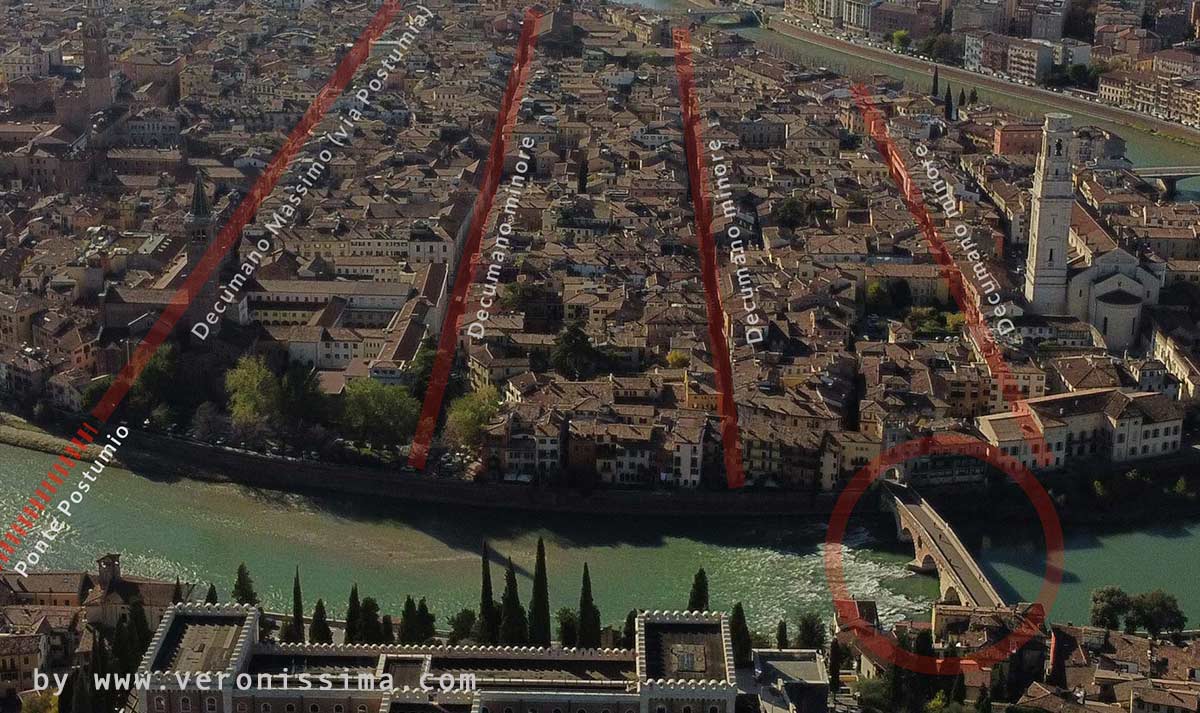
The Roman city was built according to the rigid regular grid pattern of the castrum, with parallel and perpendicular streets. However, observing the position of Ponte Pietra with respect to the Roman grid still visible today, the monument does not appear aligned with any of the city streets. A few decades later, a second bridge was built, perfectly aligned with the Via Postumia, the important Roman road that crossed Verona. For this reason it was called Ponte Postumio. Today it no longer exists, probably destroyed by a flood of the river immediately after the end of the Roman Empire.
The Construction
Ponte Pietra was of extreme simplicity and constructive austerity. Its shape was the typical "humpback" shape of Roman bridges, with the central part higher than the two ends. This guaranteed more light, i.e. more space between the bridge and the water level, which can rise by several meters during the raging floods of the Adige River. In order to guarantee even more space for the water, two openings were made. A large circular one in the center of the building, and a long narrow one on the left pillar.
The arches were five as today, made of square blocks of white stone. It was not embellished with any particular decoration, apart from a sculpture depicting a river deity that can still be seen embedded in one of the arches towards the valley.
Restoration
Ponte Pietra suffered damage from the frequent flooding of the Adige River and was restored several times. The two left arches in white stone are still the original Roman ones. The two arches on the right were rebuilt in brick in the Scaligera era (13th-14th centuries), while the central one dates from the Venetian era (1500). This use of different materials is the main characteristic of Ponte Pietra.
In the Middle Ages, a tower was added to the bridge, which can still be admired at the right end of the bridge, to defend one of the entrances to the heart of the city.
German Dynamite
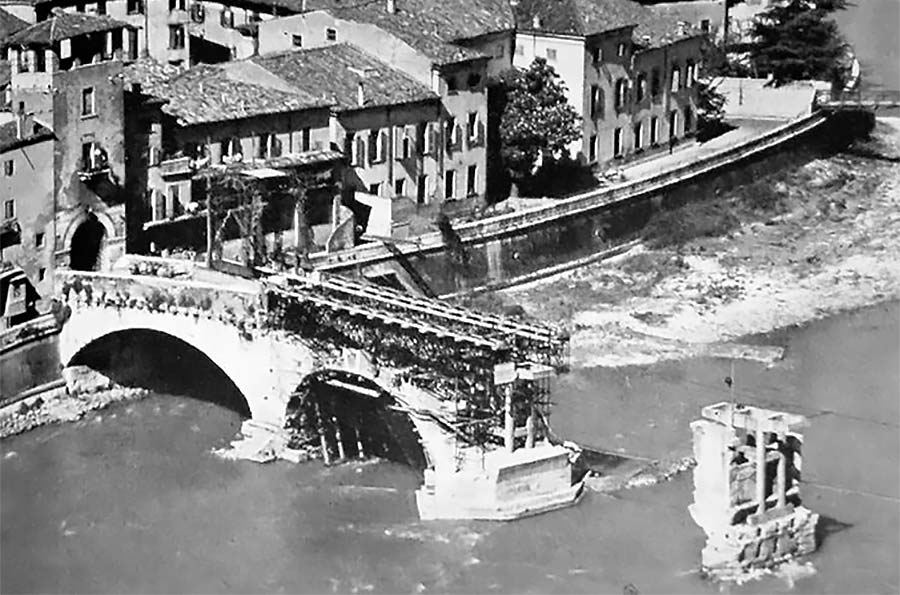
On April 25, 1945 the German occupation troops, heirs of the Goths, Ostrogoths, Lombards and other barbarian tribes that had ravaged the peninsula centuries earlier, hastily left Italy at the end of World War II. In order to slow down the Allied army's pursuit, they mined all the city's bridges. The prayers of the authorities, who tried to save at least the historic bridges such as Castelvecchio and Ponte Pietra, were to no avail. Of the ancient Roman bridge only part of the left arch was saved.
The reconstruction works took place at the end of the 50s. As much as possible of the original material was recovered, which ended up in the river. Parts irreparably destroyed were rebuilt with a painstaking work of "stone philology" that carefully reconstructed the three parts of the bridge: the Roman, the medieval and the Venetian.
Guided Tours
Ponte Pietra can still be admired today in all its ancient magnificence. It can be covered on foot and from its center you can enjoy a marvelous view of the Adige River, the hills north of the city, and the entire area of Castel San Pietro and the Roman Theater.
It is normally included in all guided tours of Verona. It can be admired from the coach if the tour includes a scenic drive, or from the Bra dei Molinari, a convenient riverside esplanade right in front of the Roman Theater.
A special focus on the bridge and the area of the city where it is located is reserved in the Verona Roman theme tours.
Further information and bookings:
+39 333 2199 645 info@veronissima.com P.I. 03616420232 C.F. CPPMHL74L13L781C

 IT
IT 日本
日本 DE
DE FR
FR 中文
中文 ES
ES